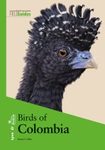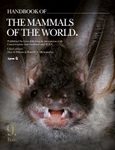By
Keith
28 Oct 2020
Written for Flexibound
This is the latest offering in the
Lynx and BirdLife International Field Guides collection and covers all of the West Indies except Trinidad & Tobago and the Netherlands Antilles. These are excluded because their fauna is more closely linked to the South American continent rather than the remaining 115 or so islands in the West Indies. Following the pattern of previous guides in the series, the book adopts the HBW/BirdLife taxonomy and uses existing illustrations from HBW – several of which have been improved specifically for this volume.
The West Indies are of great interest to birders for many reasons. Well over 700 species have been recorded here and although around 200 of these are very uncommon migrants or vagrants, around 190 other species are endemic to the region. Most of the countries or significant islands have at least one endemic, but Jamaica tops the list with 32, followed by Cuba on 29. In addition to this, six families are confined to the region. On the negative side, around 60 species have been introduced to the islands over the years and some are flourishing to the cost of native bird species.
The West Indies have already lost several species to extinction in the last 200 years, and the book features four of these plus two others that may or may not be extinct, namely the Ivory-billed Woodpecker
Campephilus principalis and Semper’s Warbler
Leucopeza semperi – last seen in Cuba in 1988 and Saint Lucia in 1961.
Those who use the IOC taxonomy will notice a number of differences affecting both common and/or scientific names but most of these are easily resolved and the book shows alternative names. IOC splits Providencia Vireo
Vireo approximans and in this book, it is treated as part of Mangrove Vireo
Vireo pallens (rather than Thick-billed Vireo
Vireo crassirostris with which it is lumped by Clements). However, IOC fans will find lots of new splits to think about. Examples include Bahama Lizard-cuckoo
Coccyzus bahamensis, Bahama Nuthatch
Sitta insularis (possibly now extinct as a result of Hurricane Dorian in September 2019), Grand Cayman Bullfinch
Pyrrhulagra taylori, Hispaniolan Elaenia
Elaenia cherriei, Lesser Antillean Euphonia
Euphonia flavifrons, Puerto Rican Euphonia
Euphonia sclateri, Puerto Rican Mango
Anthracothorax aurulentus and St Vincent Tanager
Tangara versicolor.
An introductory section explains the layout of the book and describes the region. It also suggests 29 locations to go birding across all of the island groups. There is plenty of information to explain how the West Indies ornithology has been discovered over time, and how modern conservationists are trying to keep it safe. There is an appendix of 36 species for which records are unproven or relate to likely escapes.
The book follows others in the series using texts of around 150 words per species to cover status, habitat and behaviour, age, sex and geographical variation and voice. Over 1600 illustrations by 29 artists cover all of the species and distinctive subspecies, and for some families, birds are shown in flight. Breeding and non-breeding plumages are shown in many cases and a QR code for each species links to the Internet Bird Collection gallery of photos, videos and sounds. There are around 650 full-colour distribution maps for all species other than the rarest vagrants and these have been zoomed in to cover just the islands of interest when appropriate.
Once again this is a well-designed and fact-filled guide from Lynx. I am sure James Bond would have been impressed.







































